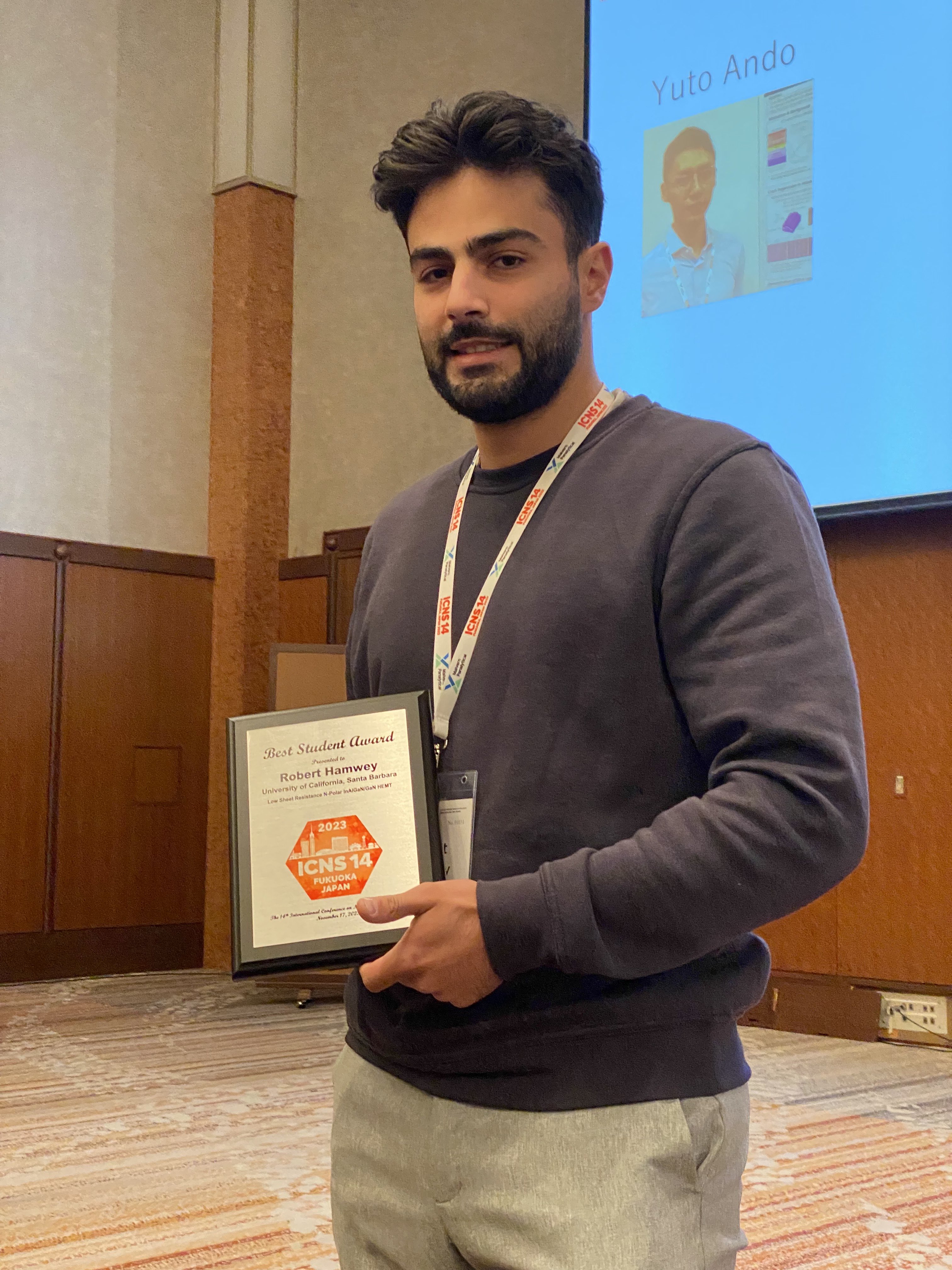
Robert Hamwey's HEMT article featured in Semiconductor Today
18 January 2024
UCSB reports first N-polar InAlGaN HEMT
University of California Santa Barbara (UCSB) in the USA has reported the first N-polar indium aluminium gallium nitride (InAlGaN) quaternary back-barrier high-electron-mobility transistor (HEMT) [Robert Hamwey et al, IEEE Electron Device Letters, published online 25 December 2023].
The advantages of growing III-N heterostructures for HEMTs with AlGaN ternary barriers in the N-polar direction have included record high output power, power density, and power-added efficiency at 94GHz, compared with devices based on the more usual Ga-polar structure. The use of quaternary InAlGaN enables high Al content without increasing the strain due to lattice mismatching. AlGaN suffers from an upper limit in Al concentration before cracking occurs.
The epitaxial structure for the HEMT was grown by metal-organic chemical vapor deposition (MOCVD) on 4°-miscut sapphire (Al2O3) substrate (Figure 1). Such substrates are used to avoid hexagonal hillock defect formation, which commonly occur in N-polar growth. Iron (Fe) doping created a semi-insulating GaN buffer layer, before an unintentionally doped (UID) layer. The channel of the device consisted of a two-dimensional electron gas (2DEG), which formed in the GaN channel layer near the AlN spacer and InAlGaN back-barrier layers. The back barrier was grown at 910°C. The material was capped with 5nm silicon nitride (SiNx) for protection before HEMT fabrication processing.